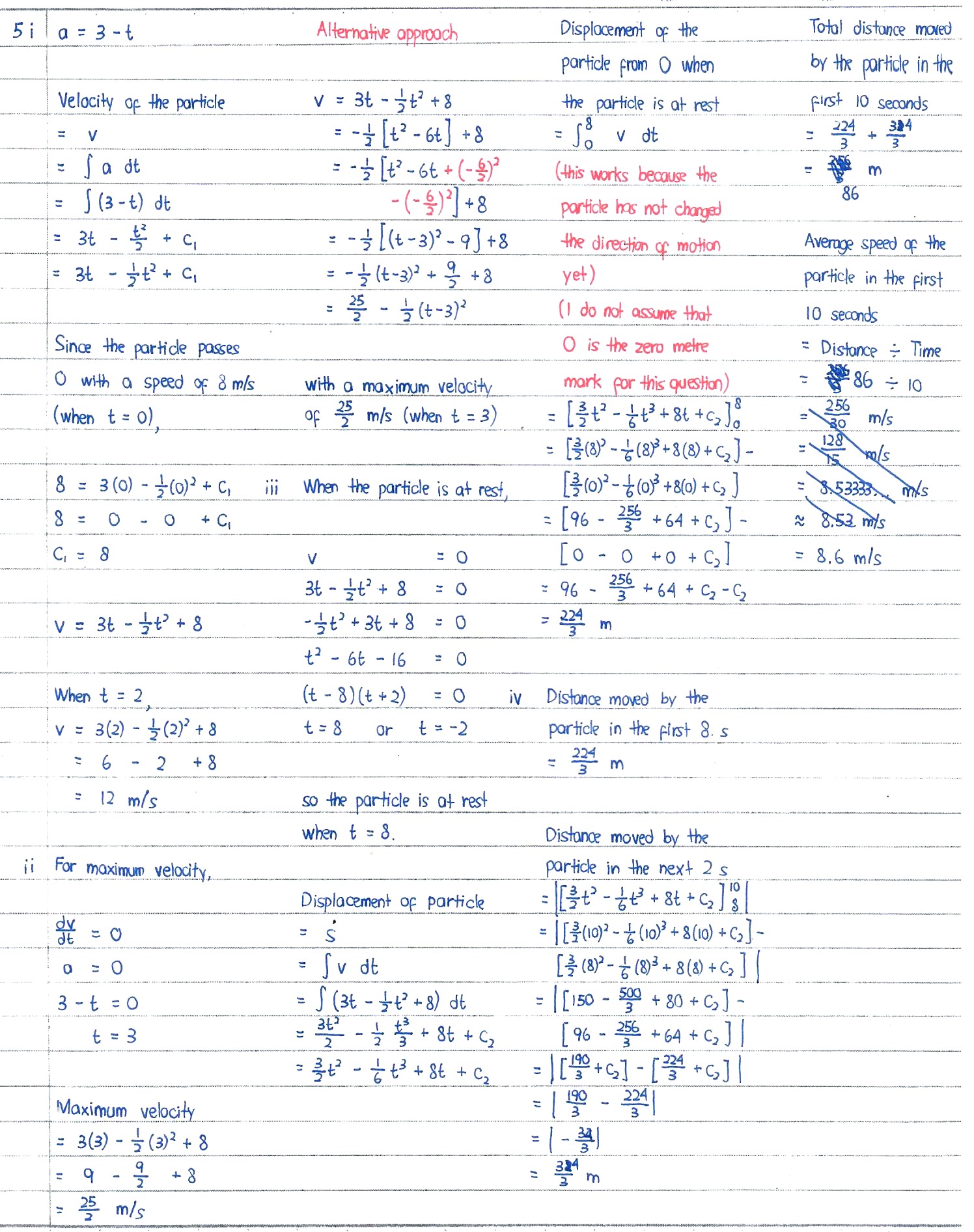Eric Nicholas K's answer to Candice's Secondary 4 A Maths Singapore question.
done
{{ upvoteCount }} Upvotes
clear
{{ downvoteCount * -1 }} Downvotes
Hi Candice! Here are my workings for this question.
For part iii, I do not make the assumption that O = 0 m, but you can do so because O is just a reference point. I do not make that assumption all the time because there was one occasion where I attempted to answer a question and O happened to be the 2 m mark (the question did not make clear mention of this); as a result, when the question asks for the displacement of the particle from the 0 m mark, I obtained a different answer as a result.
For part iv, we need to take note of the timing at which the particle comes to a halt. This is because as there is a good chance that the particle changes direction (to travel the opposite direction) after this halt (turnaround point). This results in the total distance continuing to rise, whereas the displacement will start to change (if you run 5 m in front and 5 m backwards, your total distance is 10 m but your total displacement is 0 m).
Average speed is the total distance travelled (not total displacement) divided by the total time taken, whereas average velocity is the total displacement over a given period of time divided by the total time taken. This concept is clearer if you are also taking Physics.
This is probably your first time learning kinematics in A Maths, so you may face some difficulty here. Let me know if you need more explanation and I will do my best to explain them again!
For part iii, I do not make the assumption that O = 0 m, but you can do so because O is just a reference point. I do not make that assumption all the time because there was one occasion where I attempted to answer a question and O happened to be the 2 m mark (the question did not make clear mention of this); as a result, when the question asks for the displacement of the particle from the 0 m mark, I obtained a different answer as a result.
For part iv, we need to take note of the timing at which the particle comes to a halt. This is because as there is a good chance that the particle changes direction (to travel the opposite direction) after this halt (turnaround point). This results in the total distance continuing to rise, whereas the displacement will start to change (if you run 5 m in front and 5 m backwards, your total distance is 10 m but your total displacement is 0 m).
Average speed is the total distance travelled (not total displacement) divided by the total time taken, whereas average velocity is the total displacement over a given period of time divided by the total time taken. This concept is clearer if you are also taking Physics.
This is probably your first time learning kinematics in A Maths, so you may face some difficulty here. Let me know if you need more explanation and I will do my best to explain them again!
Date Posted:
5 years ago
Okay thank u so much :)



